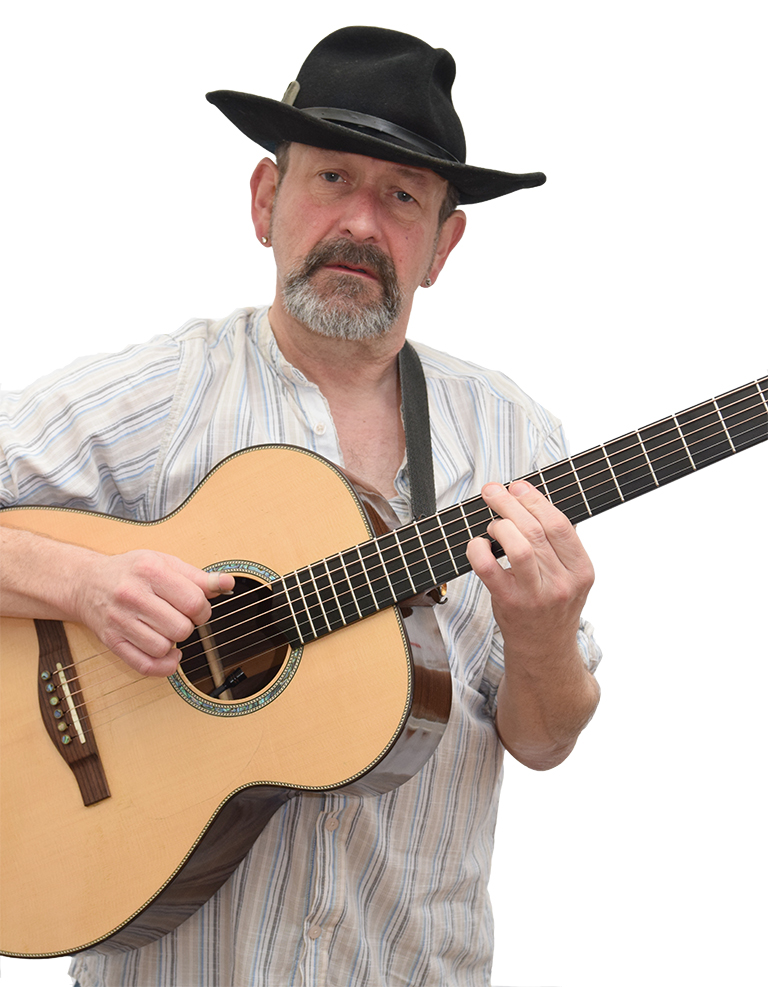Phil Hare -> Acoustic Guitarist -> Guitars
Guitars
As is often the case with subjects that appear to have been partially colonised by the male population eg. motorbikes, cars, trains, sport in general etc. I receive many e-mails regarding the guitars I play, their construction details and why I play them.
My 30+ years of playing has taken me on an amazing (musical) journey, some of which has been documented in my own biography. I have played at guitar festivals, done demonstrations of new models, prepared courses for the WEA, and occasionally contributed to guitar/acoustic magazines and national radio on the subject of acoustic guitar playing.
However, in this section of my site, I will take you through the guitars I currently own, and my broad reasons for doing so.

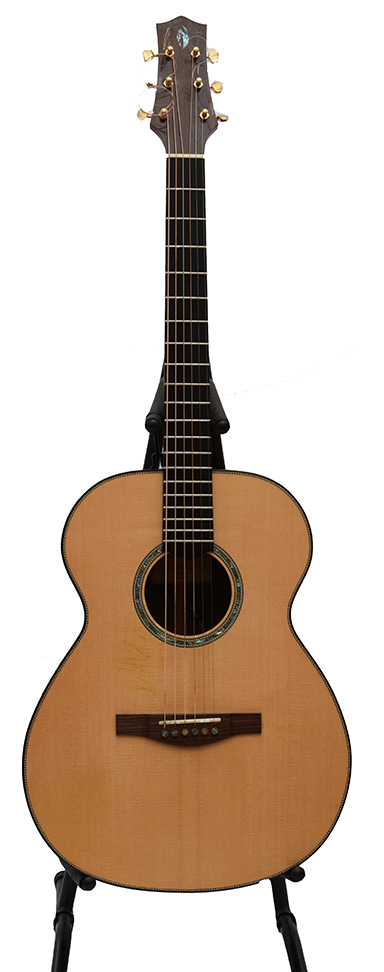
‘Phil Hare Signature’ guitar by Gary Nava, UK (2011).
In 2011, I took delivery of the ‘Phil Hare Signature’ guitar by master luthier Gary Nava, a London maker now based near Wisbech, Cambridgeshire. This instrument was around 10 months in the making and was based on a collaborative design between Gary and myself. Having played – often purely acoustically – in small folk/blues clubs for years, I had been searching for a guitar whose volume could cut through a small room without the need for any amplification. I had previously played a (Japanese) Lowden S5 which met my volume requirements, but was perhaps a little shy on subtlety. This discernment has evolved from my teaching guitar, and starting to play more instrumentals in my concert and club sets. I was also taking more notice of dynamics, and the need for perhaps a single note to reach the ears of the guy at the back of the room. This attention to detail had been inspired by listening to the compositional work of players like Jacques Stotzem and Ralph Towner and had become an important part of my approach after I had owned a Santa Cruz OM/PW. The Cruz had fantastic balance and dynamics, but was a little short of volume to the degree that I occasionally took a small Trace Elliott amp with me so the proverbial ‘guy at the back’ could hear the quiet bits of a slow air, for example.
So, with this in mind, I wanted the Nava to have the punch and volume of the Lowden, combined with the dynamic range and balance of the Santa Cruz. I favoured a wide neck and 650mm scale length for the classical-style positioning and greater ‘spacing’ that I was moving towards, plus a slightly deeper lower bout in order to push more air around the instrument. I wanted an OM size (like the Cruz) for playing comfort, and I also leaned towards fairly plain appointments as I was more interested in the sound than any flashy flourishes. The action is around 2.25mm at the 12th fret and so is great for most styles of playing. That being said, I use this guitar for almost exclusively, across-the-range fingerstyle playing and, at all my club and concert performances on the acoustic/folk scene and for all the amplified gigs, the Fishman Ellipse pick-up system (blend of live mike and piezo) has come into its own. All in all, the instrument has been a great success – accompanying me from town to town across the UK & Europe, protected by a sturdy custom Calton case. There are many YouTube videos both live and ‘slobbed-out’ at home, featuring this fantastic creation.
The general specs of this guitar are taken from Gary’s website and are featured below:
Phil Hare Signature Guitar
This guitar was designed in collaboration with acoustic guitarist extraordinaire; Phil Hare.
Phil has been described as the All-Purpose Acoustic Guitar Hero and this is the all-purpose guitar built to suit his needs. You can see and hear Phil demonstrating this guitar on YouTube.
Brief specification:
If you’d like any further information about ordering a Phil Hare Signature guitar, please give me (Gary Nava) a call on +44 (0) 1945 587236 or e-mail info@navaguitars.co.uk.

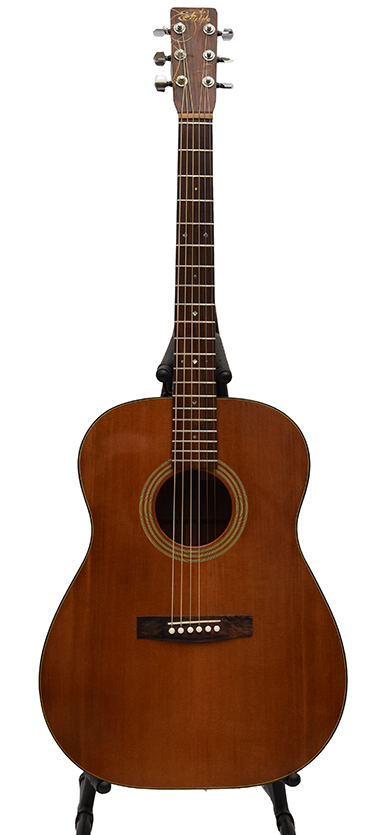
Fylde Orsino by Roger Bucknall, UK (1979)
After having heard the ground-breaking guitar accompaniments on a variety of traditional folk song and music by the likes of Nic Jones, Martin Simpson, Chris Foster, Archie Fisher and Martin Carthy, I was hooked: on open-tunings, percussive fingerstyle and the enduring appeal of ‘acousticity’. It was 1980, and I was 21 years old and nervously taking my first steps into what was seen as a specialist guitar world. The main link between all those artistes at the time were the wonderful guitars made by Roger Bucknall, at the time based in Kirkham, Lancs on the Fylde coast – hence the name. I bought my Orsino in January 1980 from a small outlet in Ellesmere Port on the Wirral (now closed – the shop, not the town!). It cost me £340 (expensive at the time), but I bought it on higher –purchase which meant that I actually paid £450 by the time I had paid it off (these were the dark days of early Thatcherism!). I was determined to conquer this new world and so this guitar was my access point, and I played almost exclusively finger-picking on it from day one. The specs have changed over the years but my Orsino has a nicely-aged solid Cedar top ,Mahogany back and sides, mahogany neck, zero-fret and rosewood bridge and is currently fitted with a Fishman Matrix active pick-up. It lives in a reinforced fibreglass Calton case and I use it on videos of (mainly) Celtic-style stuff, for recordings, and as a back-up to the Nava. It is particularly receptive to finger-style open tunings such as CGCGCD. It certainly saw some sterling service in my early days on the folk scene, featuring on many landmark recordings for Fellside and 101 Records, and its vintage status is fully vindicated.
For anyone wanting further specs on the Fylde Orsino, current prices etc, I would recommend that you visit the Fylde website: www.fyldeguitars.com

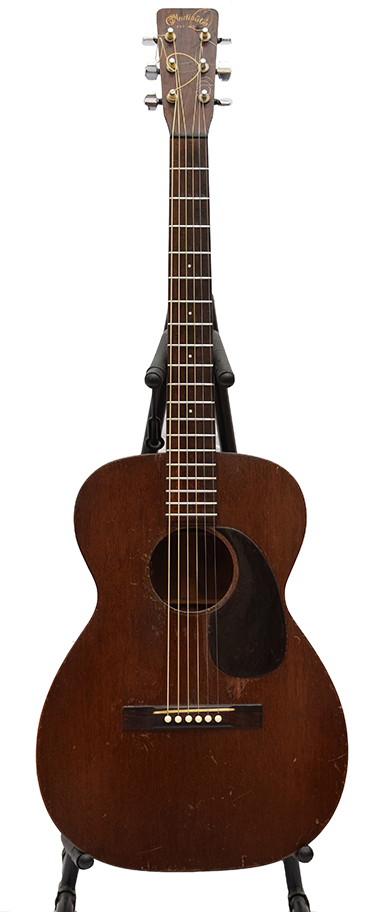
Martin 0-15, CF Martin & Co USA, Made in USA (1953)
This is a small-bodied, all Mahogany, vintage Martin with more mojo than a room full of blues shouters. Life is a strange thing. I met a dealer, I bought a 1930 Kalamazoo KG-11 for what would have to be considered a 'nominal' price, I travelled to Manchester to play a gig with Pete Ryder who immediately fell in love with the Kalamazoo and offered me the Martin as a direct exchange. Time will probably tell who was right or wrong - if that is even applicable - but the Martin sound is delicate, yet earthy, punchy, but clearly defined and truly unique. I will use this guitar from time to time, but it will stay with me forever as a testimony to these 'happenings' in life, and to remind me of our friendship with Pete & Sara. As to value, you would need to look at the serial number and go back through old listings etc, but I would put this guitar in a bracket beyond £2k.
So, some may be thinking; what happened to the Martin 000X1AE? What about the Petros? What's new pussycat? Well, my simple answer is that as long as I am involved with music in a professional capacity, I am likely to get offered, buy, trade, deal, and so-on many varied guitars and sometimes these will change. The only ones that won't are the ones already listed. Come and see me live to find out what I may have!

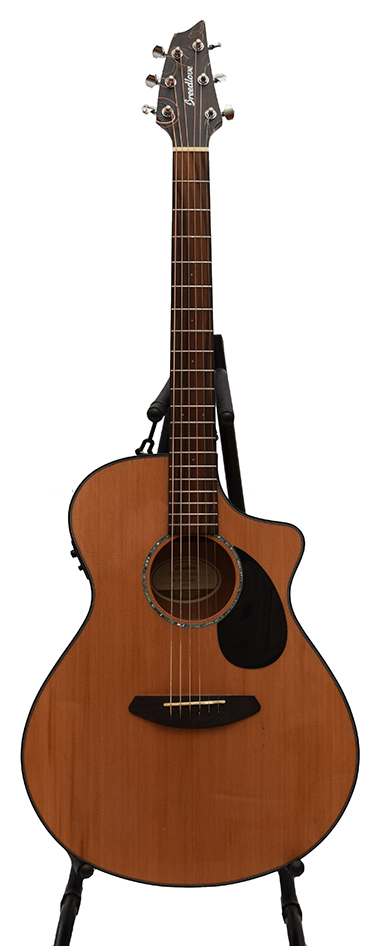
Breedlove Concert Pursuit (Cutaway), China (2015)
Designed in Oregon and made in China. Cedar top, Mahogany back and sides, aerodynamic shape, with tuner / USB port. Standard scale length, bridge pin free. All purpose guitar for teaching and sessions.


Gary Nava Classical Guitar, London (1978)
Standard classical scale length, Spruce top, Mahogany back and sides, Rosewood neck. Given to me by Gary on a whim after a 'service' to my main signature guitars. This (I believe) is the first guitar he made.


Rudolf Wurlitzer Parlour Guitar, USA (1926)
Spruce top, Rosewood back and sides, ladder bracing - from the Paul Brett guitar collection. Made by CF Martin for Wurlitzer Company.

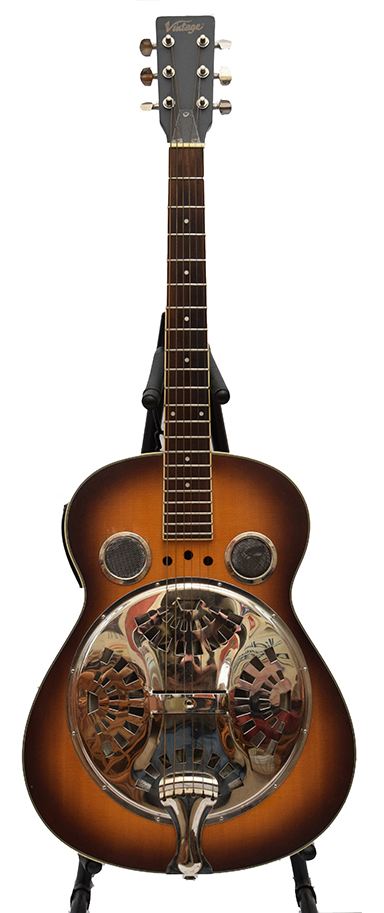
Vintage Biscuit Tin Resonator, China (2009)
Sunburst top, laminated woods, internal piezo pick-up, standard resonator features. Used for sessions and for slide blues and country flourishes.

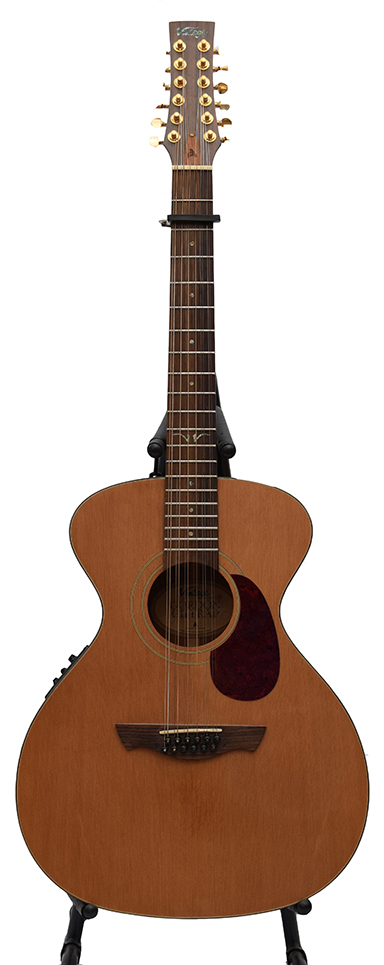
Vintage Gordon Giltrap 12 String, China (2010)
Designed by Rob Armstrong. North American Cedar top, Mahogany back and sides, long scale length, Gold Grover tunings, on-board tuning and EQ pick up system. Remarkable how a generic Chinese CNC produced instrument has been more than faithful to the innovative and original design.

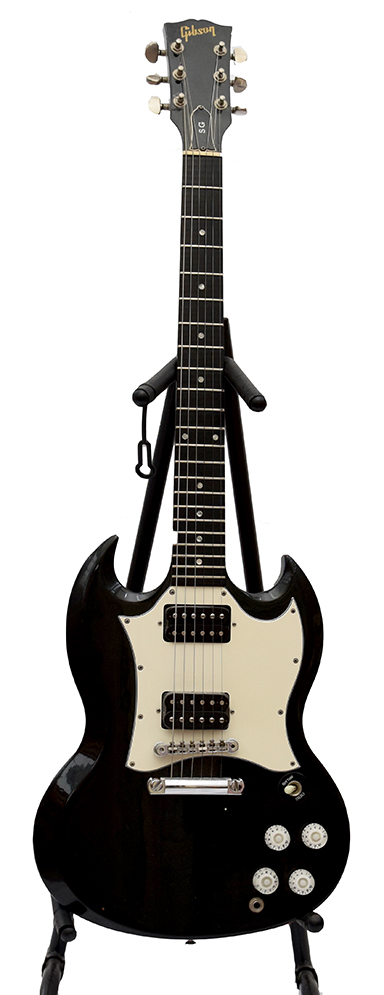
Gibson SG Standard Centenary, USA (1994)
I also have regular sessions with young guys (usually) who fancy themselves as future rock stars. It’s very difficult to demonstrate either Jack White or Eddie Van Halen on a Martin D-28, so, after much scouting around I found a GIBSON SG STANDARD made in their 1994 Centenary year – again bought through ebay – for £220. Yes, £220! The reason for this was that the neck had sheared off (perhaps someone was trying to do a ‘Pete Townsend’). So, I removed the tuners, realigned the neck, glued it, clamped it, left it and then set it up. It now plays like a dream, resplendent with twin humbuckers and that rich, Gibson sound put through 70 watts of Marshall combo (bought shortly after). I can now attempt to rock with the best of ‘em!

I also own the following guitars:
Martin D28 1976 - Classic dreadnought Sitka Spruce and Rosewood combo
Santa Cruz 00 1996 - A small-bodied Sitka Spruce and Indian Rosewood tone monster
Lowden 010 1995 - Fingerpickers delight, Cedar and Mahogany combo
Guild F240-e - Jumbo Spruce/Mahogany, Modern classic.

Footnotes
The folk/acoustic scene is notorious for people dabbling with various acoustic instruments. I have dabbled in the past with fiddles, melodeons, banjos, bouzoukis, mandolas, ouds, sitars etc. In my opinion, the venerable guitar can, and often will, simulate the sounds of many of those instruments if played or tuned in a certain way. I tend to stick to that line and keep playing the guitar in as many different ways as possible. One never stops learning!
Having said that, for many years I played mandolin in ceilidh and country dance bands and at folk sessions and every so often, I get called upon to play a few Celtic instrumentals in such surroundings. However, until a little while back, I had one problem with that: I didn't actually have a mandolin!

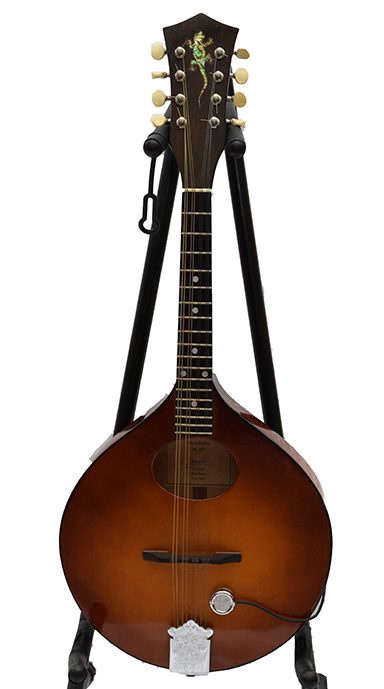
John Lynch Peardrop Mandolin, UK (2008)
So, a good friend of mine called John Lynch built me one. This mandolin is constructed from Maple, Mahogany and Ash and is a lovely flat-backed instrument which I play mainly for fun.

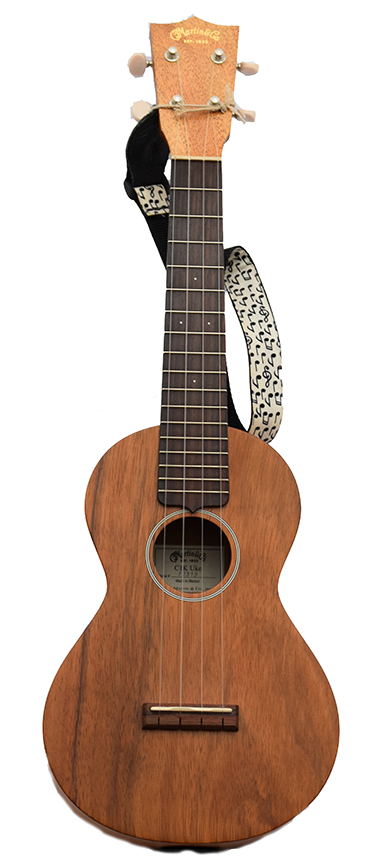
Martin C1K Concert Ukulele, Made in Mexico 2014
As I have mentioned in earlier posts, I was coerced in 2013 into doing uke classes at 2 Cambridgeshire colleges. Having never previously played the instrument, I rather hurriedly bought a basic soprano model, taught myself the necessary positions and acclimatised myself to all the possibilities by applying 30 years of guitar theory and expertise (It's only tuned to C6 after all!). I outgrew the bog-standard soprano and sought something better as my classes expanded and flourished. So I ordered this slightly larger Concert model from a Blackburn dealer at around £450. Coming in its own Martin gig bag this is a beautiful, sweet-sounding ukulele made totally of koa. This is the wood used to make many of the famous Hawaiian ukes and it produces a warm, rich and responsive sound. Although seeming a little flimsy around the heel, this is a solid-made instrument with all the usual Martin appointments and it finally means I have the tool for the job, as well as now having a better instrument than some of the students!
Unlike mandolins, banjos, citterns etc etc, it is possible to fingerpick the uke and produce fully-formed pieces of music which - although quite thin-sounding - actually stand up on their own without the need for any other accompaniment. For further details check out these great instruments on the CF Martin website.

So there you have it; my guitar and instrument inventory. It's highly unlikely I will add to that, but, as I mentioned, I do buy and sell instruments when I have some free time, so I may be worth contacting if you require an acoustic instrument of any denomination. If I can't provide it myself then I will probably know a man who can!
